March 27, 2024
B2B Sales Prospecting: 8 Strategies to Accelerate Pipeline Growth

- What is B2B sales prospecting?
- Different methods of B2B sales prospecting
- 8 B2B Sales prospecting strategies that work
- 9 B2B Sales prospecting tools
- 6 Metrics to measure B2B sales prospecting performance
B2B sales prospecting has come a long way from the days of smile-and-dial.

Without the right software, getting results these days involves walking a long hard road paved with time-consuming manual tasks. And putting the hours in to get to know your prospects, build relationships, and establish yourself as the go-to provider of solutions.
This means you need some tried and tested strategies as your road map.
What’s that you say? Can we recommend any?
You read our minds.
We make software for the toughest, most clued-up B2B prospects going: sales professionals. So we asked our own hardworking prospectors how they tackle that herculean task.
Come with us as we walk you through:
- What is B2B sales prospecting
- B2B sales prospecting methods
- B2B sales prospecting strategies
- Which B2B sales prospecting tools we recommend
- Which B2B sales prospecting metrics you need to track
Saddle up and let’s ride.
What is B2B sales prospecting?
Sales prospecting is the process of identifying B2B companies or people that could be a good fit for your solution (known as prospects) and reaching out to them.
It marks the beginning of the B2B sales cycle, setting the foundation for all subsequent sales activities.
Prospecting is the first stage of the B2B sales process and is done by sales development representatives (SDRs) and account executives (AEs). The aim is to find, contact, and qualify new leads and prospects to place in the sales funnel for nurturing.
Prospecting can be inbound (salesperson receives a list of prospects from the marketing team) or outbound (sales teams picks their targets). Outbound prospecting is harder than inbound as you’re targeting people who haven’t yet expressed interest in your product, but you do have more control over what comes back, and deals tend to be larger.
See our sales prospecting guide for a wider look at the topic.
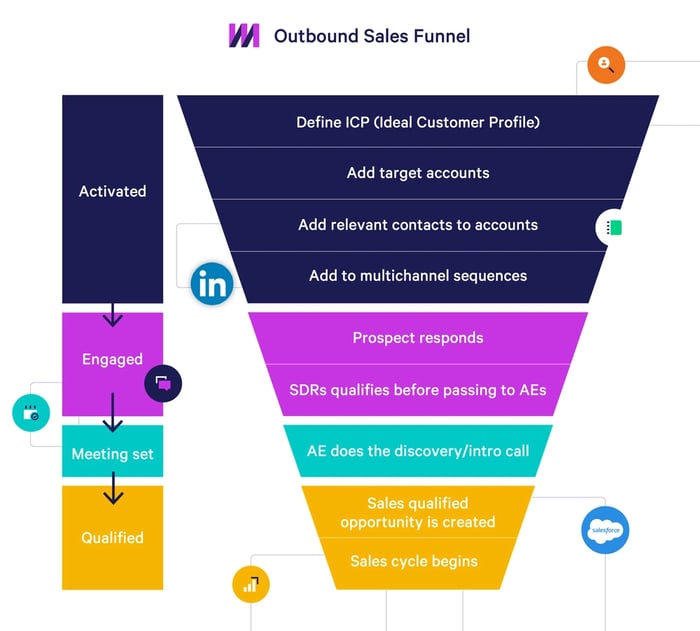
Different methods of B2B sales prospecting
A multi-channel approach that includes different prospecting methods tends to work best.
Here’s a breakdown of the individual components:
Personalized email
With everyone online 24/7, this is a highly effective prospecting method, whether it’s cold email (they never heard of you before) or warm (you had prior contact on social media, been referred, or met them in person).
Whichever approach you take, make it relevant to them, their role, responsibilities, and challenges, and never all about you. Provide value with every touch, never send empty “just checking in” emails, and write sales prospecting email subject lines that will get their attention.
It takes an average of 8-12 touches to get a response, so use a sales engagement tool like Mixmax and multichannel sequences to keep you on track and personalize at scale with customizable templates that auto-fill with prospect data from your CRM. Features like polls & surveys, and sharing calendar availability in-email help reduce friction and achieve pattern disruption.
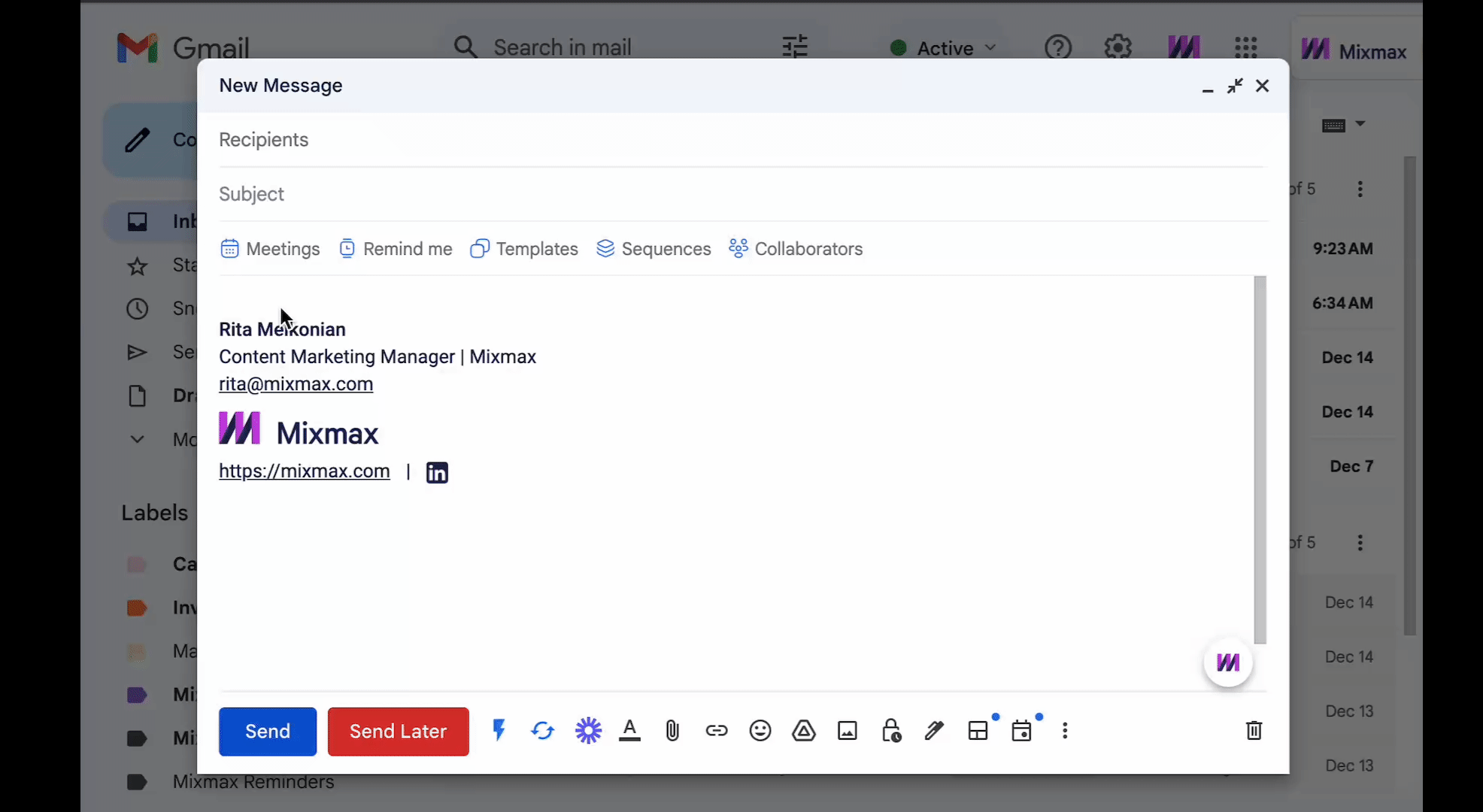 Enable prospects and customers to reply with one click
Enable prospects and customers to reply with one click
Phone calls
Done right, another very effective method. While it’s hard to get people to pick up the phone these days, you can’t ignore the fact that most people get way fewer calls than emails.
Cold calling still works but for best results warm contacts up through social selling or a referral (more on these below). Have a strategy to get past gatekeepers and access decision-makers, script your calls, and use an agenda to keep you focused.
Ask open-ended questions and listen more than you talk to get them to open up and reveal pain points. Don’t rush in with your solution, but wait until they ask about your product before you pitch. Be honest and use objections as an opportunity to establish trust, and never end the conversation without booking the next meeting or establishing the next step.
Use Mixmax engagement alerts to follow up with a call when you know they’re engaging with your emails, and use our dialer to call directly from your Gmail inbox.
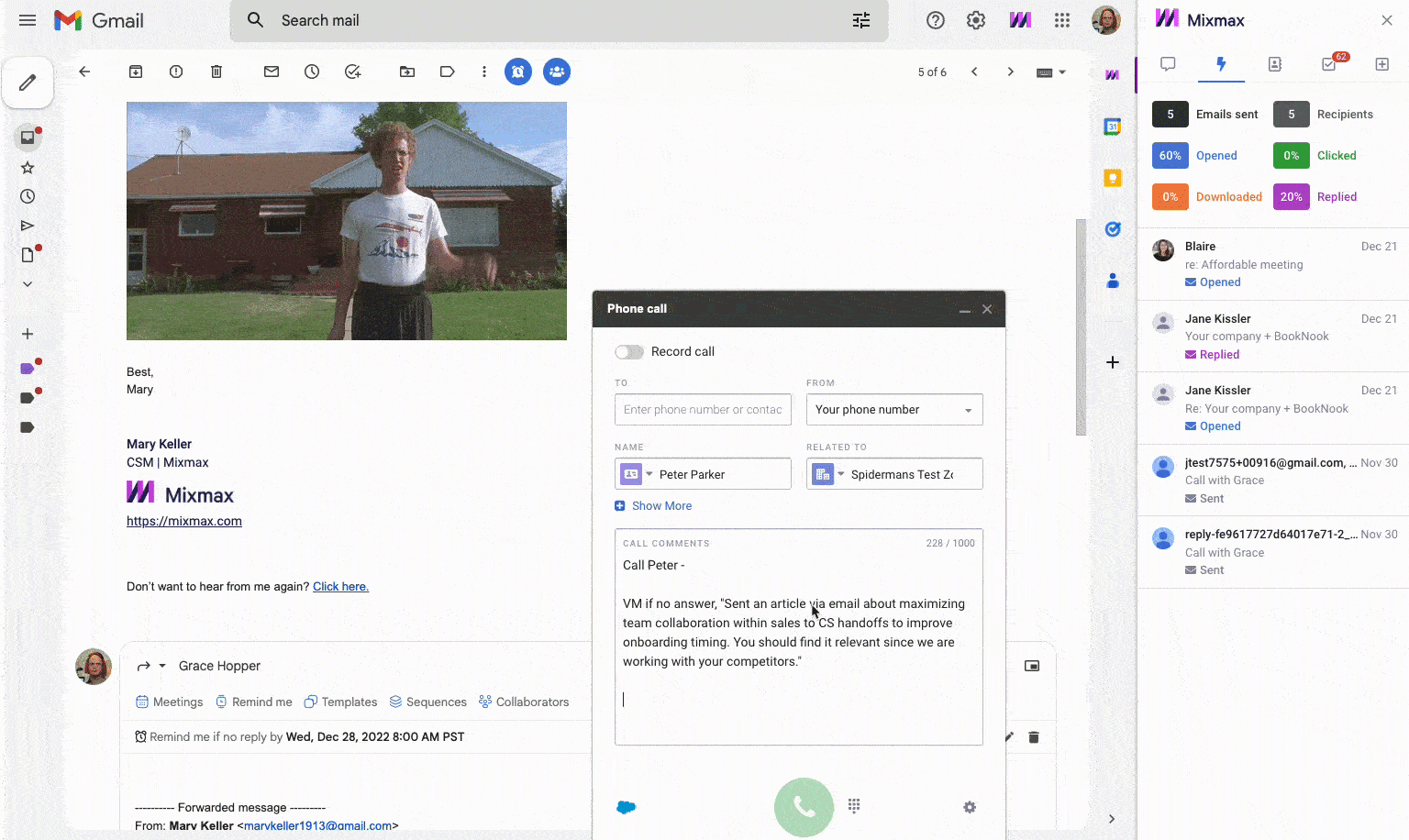
Mixmax Dialer in Gmail inbox
| Related post: How to Master Multi Channel Prospecting in Outbound Sales |
Social media
Social selling is a great way to network, build your personal brand, establish trust and thought leadership, share useful content, and lay the ground for deeper conversations about the things prospects care about before you reach out over other channels.
Despite the name, though, it’s not an appropriate channel for a hard sell.
We love Slack, LinkedIn and Discord communities, and industry forums to get to know our prospects and their challenges.
Be active, helpful, answer questions, and use them as an opportunity to educate people about your product. If you’re using Mixmax, you can weave LinkedIn touches into your sequences.
Twitter is a less obvious place to find prospects, but it has its uses when it comes to networking and monitoring potential buyers.
Leslie Venetz's social-heavy Mixmax sequence
Physical events
Physical events give B2B salespeople the chance to engage directly with prospects, building relationships that digital channels can't replicate.
And after so long interacting in 2D, everyone is happy to have a chance to rub shoulders again at industry events, congress, and meetups that take place daily in every city around the world.
Find out where your target audience hangs out and hook up with them there, and remember to obey the golden rules of engagement that go for calls and email: Make it all about them, not you. Listen and diagnose pain rather than ramming your sales pitch down their throat along with the free pastries.
Swap phone numbers and connect on social media so you can keep the conversation going afterward.

Referrals
Like any sane person, B2B buyers trust someone they know over another sales rep, so referrals are a powerful, if woefully underused, way to generate new business.
Check your existing customers’ network to find new leads and ask for an introduction. For best results, check everything’s going well with your product first, or time it after they’ve achieved a big win.
Build up a relationship with your champions and track when they change jobs so you can persuade them to take your solution with them to a new role.
8 B2B sales prospecting strategies that work
Now you know what sales prospecting methods to use, let’s take a look at some strategies to supercharge your prospecting.
1. Empower your B2B prospecting teams
AKA sales enablement, this is all about providing your sales teams with the tools, skills, and resources they need for effective B2B prospecting.
This might include:
- Identifying skills gaps and providing training in sales prospecting techniques and best practices, copywriting, and using sales prospecting and collaboration tools.
- Getting sales to work with other departments like product or marketing to create up-to-date, on-brand content that reps can lay hands on whenever, wherever (so, not in siloed repositories). If you’re using Mixmax, they can insert multimedia files right into communications from their inbox thanks to the Dropbox integration.
- Investing in an integrated tech stack that includes a sales engagement platform and dedicated tools for researching prospects, finding and verifying contact information, dialing, etc.
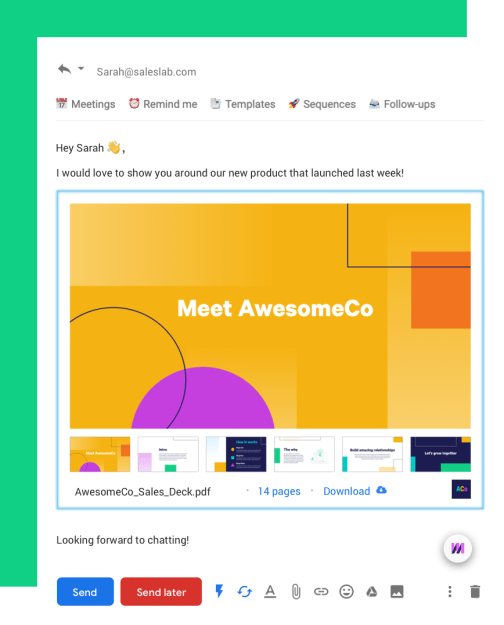
Some companies have a dedicated sales enablement department, while in others it’s the responsibility of RevOps, L&D, or other departments.
2. Align sales and marketing
Effective sales prospecting relies on generating quality leads and prospecting lists, which is easier when you have a single revenue generation machine working towards the same goals.
Jason Bay on the importance of sales & marketing alignment
When sales and marketing are aligned, it helps establish a coherent brand identity and messaging that paves the way for successful outreach by the sales team and generates more high-quality marketing qualified leads (MQLs).
It all starts with:
- Calculating your total addressable market: The number of prospects in your target market.
- Developing an ideal customer profile (ICP) and buyer personas for each team.
- Establishing two-way communication so each department knows what’s working.
Depending on your business model, product, sales cycle, deal size, and more, you may lean more heavily toward lead generation (marketing’s job) or prospecting (sales).
But when both are running in parallel, it creates a steady stream of leads that can be qualified and placed in the pipeline for nurturing.
See our piece on sales prospecting vs lead generation for more on this.
Importantly, getting sales and marketing rowing in the same direction allows you to:
3. Practice account-based selling
Also known as “strategic selling,” this scalable, insights-driven approach relies on a multi-channel, multi-touch strategy that targets multiple prospects within a company with tailored content, messaging, and value propositions.
It works because it goes deep into the needs and challenges of all key stakeholders and decision-makers so sales professionals can nurture company-wide relationships and guide qualified prospects through the sales funnel.
It’s particularly useful when the sales cycle is long and complex with lots of decision-makers involved and high chances of upselling or cross-selling.
Leveraging an account-based approach means doing your homework to identify all the people you need to reach out to in an account and the collateral you’ll need to share with each so they can convince the next person in the chain.
Don’t just focus on the C-suite; think about everyone you’ve got to go through to get there.
Account-based marketing tools like Triblio are useful here as they yield insights about buyer behavior, online activities, and interaction with inbound content marketing so sales teams can prioritize actions to take on target accounts.
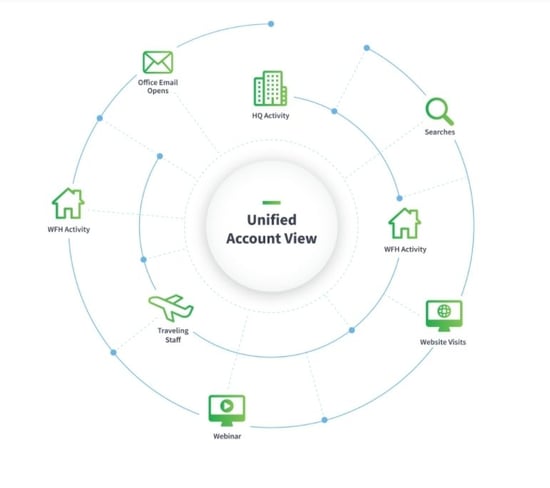
4. Profile & research your customer
B2B prospecting is a numbers game, but quality beats quantity any day.
Successful outreach relies on identifying high-potential buyers and their pain points, so you don’t waste time on those who aren’t a good fit for your solution.
Putting the time in now also means your reps will be better placed to make communications personalized and relevant and handle objections when they start reaching out.
Create an ICP and buyer personas that cover your prospects’ roles, responsibilities, challenges, and your value proposition. Then, look for prospects that match it as closely as possible.
Here’s one our SDRs use that you can copy and edit:
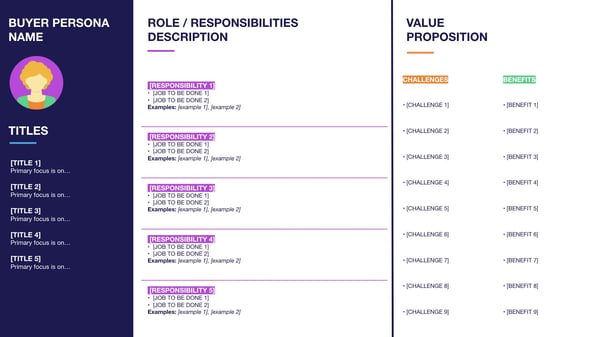
Look at your best customers, review past discovery calls and demos, and talk to customer success to see what they struggled with before onboarding and how they’re using your solution now.
Then, use B2B prospecting tools like LinkedIn Sales Navigator and ZoomInfo to identify similar accounts and new prospects.
Set up alerts to track industry news and company announcements, job changes, and purchase activity, and scour LinkedIn and company jobs pages to see if they’re hiring people who could use your solution.
Don’t neglect to research inbound leads either to understand why they got in touch and whether you can deliver value to them.
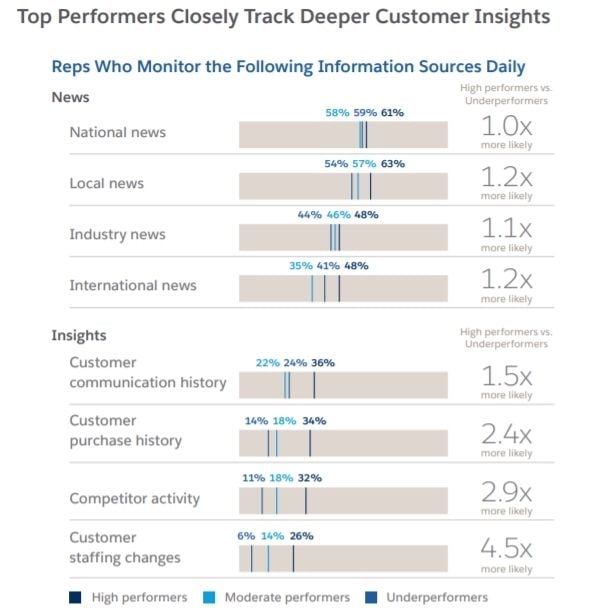
5. Build solid contact lists
This is normally done at the level of the sales team rather than individual reps.
Based on your research, look for prospects that match your ICP and buyer personas as closely as possible, then find out how to contact them.
If your marketing department is doing lead generation, they should provide a list of MQLs for the sales team. If not, use lead contact and capture tools to gather verified contact details and upload to your CRM.
6. Take a structured approach to prospecting
For the health of your pipeline, you should always be prospecting so it helps to set aside time for this. Block your calendar and turn off notifications for a fixed number of hours per week so you can concentrate on prospecting.
Other ways you can take a structured approach include:
- Using Mixmax multi-channel sequences, customizable sales prospecting email templates, and workflow automation to stay on track of follow up and ensure nothing slips through the cracks.
- Experiment with different times, days, and channels to see what works best, and leverage engagement insights to see when prospects are most likely to respond.
- Set goals, like how many meetings SDRs need to book with AEs per month, and work backward from there to allocate enough time to each one.
- Concentrate on one prospecting activity at a time rather than multitasking.
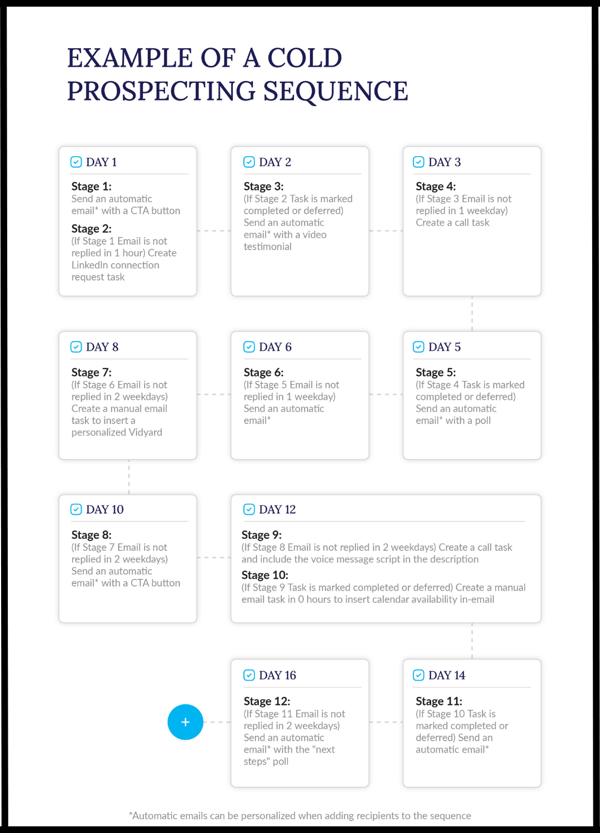
7. Sell solutions, not products
This works because it builds relationships, establishes trust, and ensures the prospect feels valued and heard right from the start.
First, get convinced of your product’s value so you can sell with conviction. Then, look for prospects who’ll feel the same.
Uncertainty doesn’t sell but honesty does, so don’t be afraid to admit you don’t know something or acknowledge where your competitors shine.
Focus on the prospect and the benefits to them, not your product and its features. Identify their pain early on and let them talk until you’re confident you’ve uncovered all their challenges and objections.
Wait until they ask about your product before you pitch; create genuine interest and desire, and the prospect will drive the sales process.
As you guide the prospect through the sales cycle, share content to educate them about your product, like case studies or testimonials. Solve their problems by proposing a solution that’s tailored to their needs and, remember, you’re a solutions expert, not a salesperson.
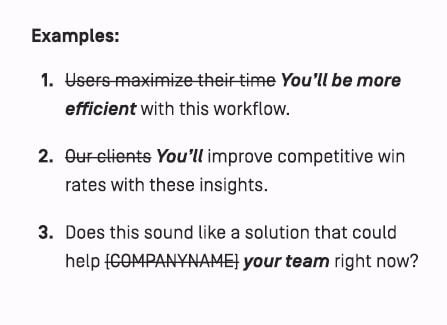
8. Automate wherever possible
All the above take a lot of time and manual work, so you need tech to take a load off by automating repetitive or manual tasks.
Prospecting tools cut the time involved in researching, contacting, and qualifying prospects by delivering actionable intelligence databases and online sources so you can concentrate on selling.
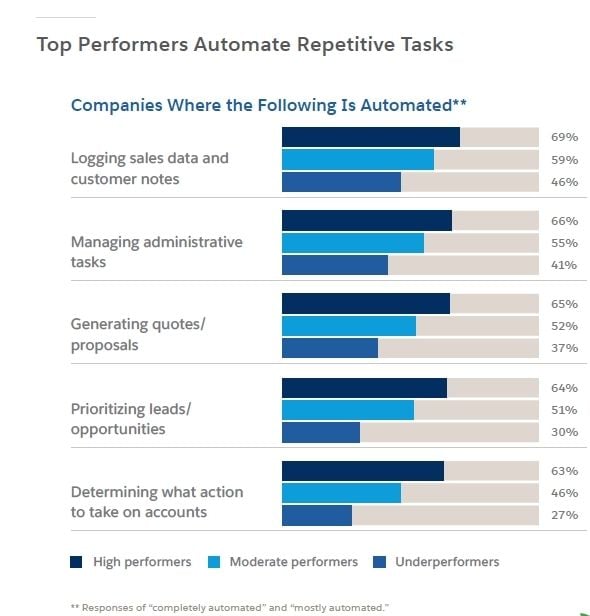
We recommend (of course) building an integrated tech stack based around Mixmax so B2B salespeople can perform all essential tasks and collaborate using Gmail & Outlook.
It’s packed with time-saving features and integrates with a range of popular sales tools like LinkedIn Sales Navigator, Vidyard, Salesforce, Slack, and more.
The two-way, real time CRM activity sync also eliminates busywork so reps can concentrate on delivering relevant, personalized outreach at scale.
Features like best-time-of-day scheduling and auto-delay responses also help get messages in front of prospects at the right time while still looking like they were sent by a human.
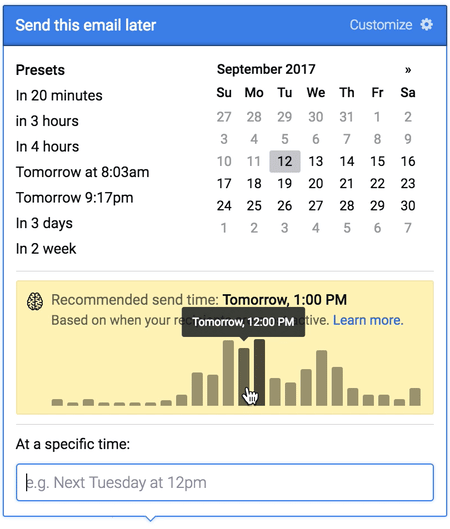
| Related post: Enterprise Sales Prospecting: 10 Strategies to Land Large Accounts |
9 B2B sales prospecting tools
Here’s our pick of the sales prospecting tools.
Profiling and researching customers
This takes a lot of time and requires you to be across multiple tools and sources, so you need sales intelligence tools to provide accurate, rapid, and actionable insights.
For tracking down high-intent B2B prospects and understanding their challenges, we like:
- LinkedIn Sales Navigator
- ZoomInfo
- G2 insights
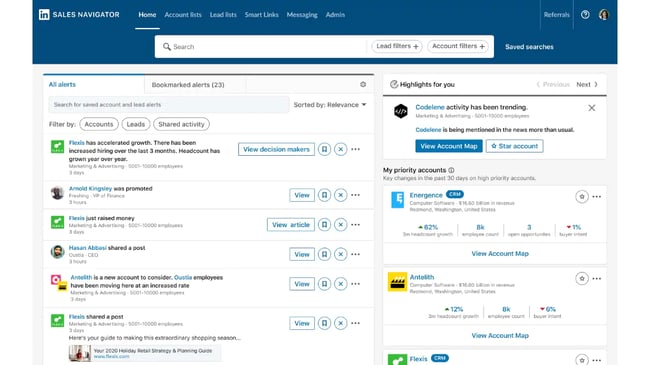
Building contact lists
Before you can reach out, you need accurate, verified contact information for potential customers that feed straight from databases and online sources into your CRM.
We suggest:
- ZoomInfo
- LeadIQ
- Seamless.ai
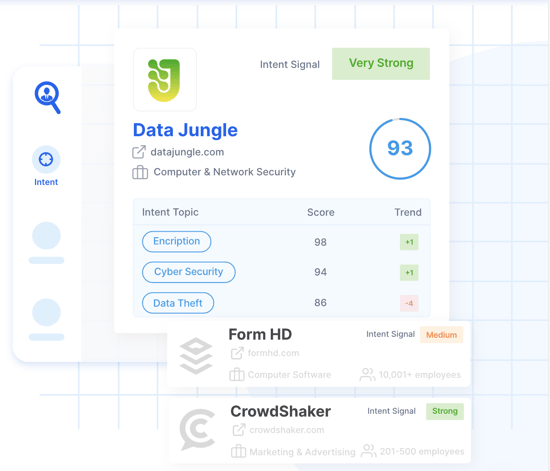
Engagement
When it’s time to reach out, these tools automate tedious or repetitive manual tasks, facilitate timely personalized outreach, help you stand out from the crowd, and deliver actionable insights so you can improve.
Our top picks are:
- Mixmax
- Dialpad
- Vidyard
When investing in tech, always think about whether it fits with your existing tools and prospecting processes, and helps you achieve your goals.
Don’t fall into the trap of paying for a fancy solution that your teams won’t use and, where possible, go for multi-function tools like Mixmax to reduce the number of interfaces you have to interact with.
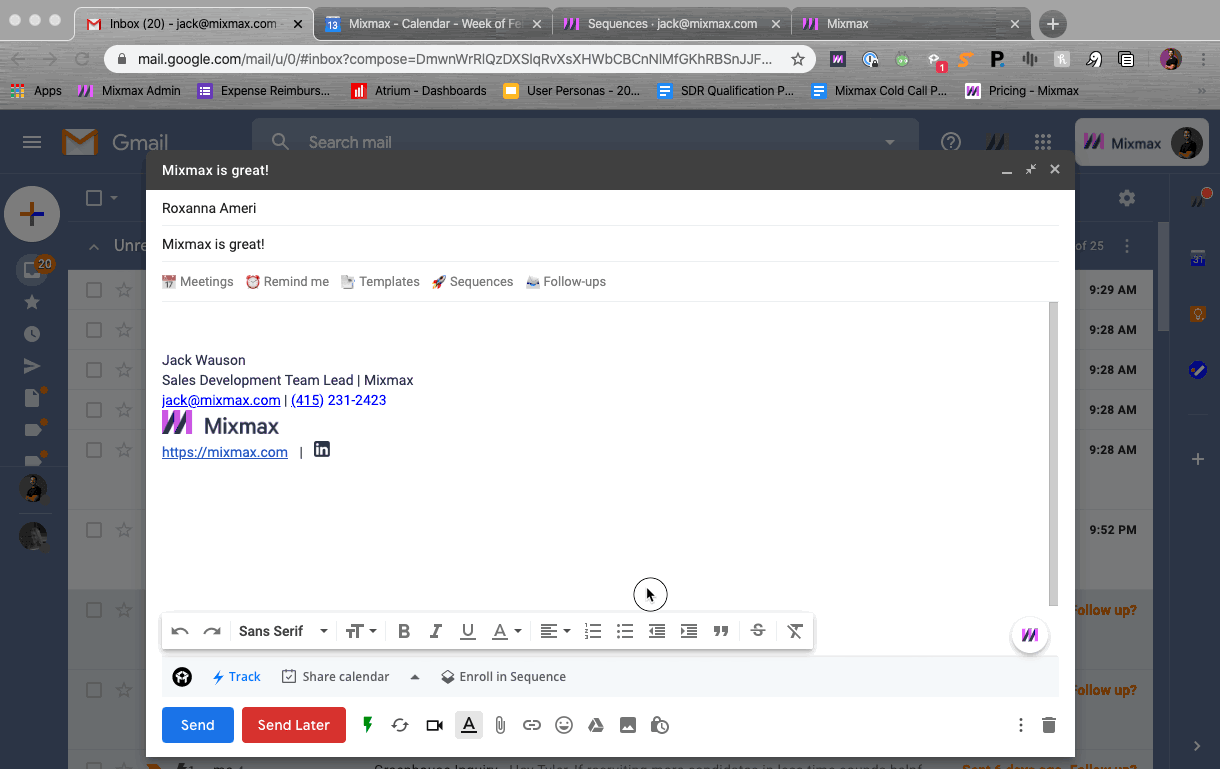
Mixmax's one-click calendaring feature
6 metrics to measure B2B sales prospecting performance
B2B prospecting shouldn’t be a guessing game, so you need to know what’s working and what’s not so you can improve.
And that takes accurate data.
Sales metrics, or KPIs, allow you to monitor progress, assess performance, and adjust strategies for best results.
These are known as leading or lagging indicators.
Lagging indicators are quantifiable, historical data, like deals closed, won, or lost, while leading ones are predictive of outcomes. So, number of prospects in the pipe, value of opportunities, meetings booked, proposals submitted, etc.
Both indicate the success of the previous or next stage in the pipeline and can be used to calculate conversion rates.
Start by establishing your goals, whether that’s connect rate, meetings booked, conversions to qualified pipeline, total revenue generated, etc. Then, work out which tools, strategies, and content will help you achieve them, and track KPIs to see whether you’re achieving those goals.
Duane Dufault, author of the Metric Management Playbook, recommends not just looking at your sales pipeline but also your activity pipeline: All the activities that contribute to creating a sales opportunity before it gets placed in the deals pipeline.
Track these activities daily, weekly, monthly, and quarterly in your CRM to see which are contributing to achieving your goals. Which produces the most, or highest value, conversions for the least effort? Then, do more of that. If you’re not getting results, tracking these indicators will help you figure out what reps need help with. So, if somebody responds but doesn’t book a meeting you should be able to work out why.
Here’s what we recommend tracking:
1. Which messages or content are working best. Here, it helps to establish the goal – opens, clicks, meetings booked, etc. – and use Mixmax engagement insights to see how many times content or emails are opened, who they’re forwarded to, etc. Conversation intelligence tools like Gong will also help you figure out what works on calls.
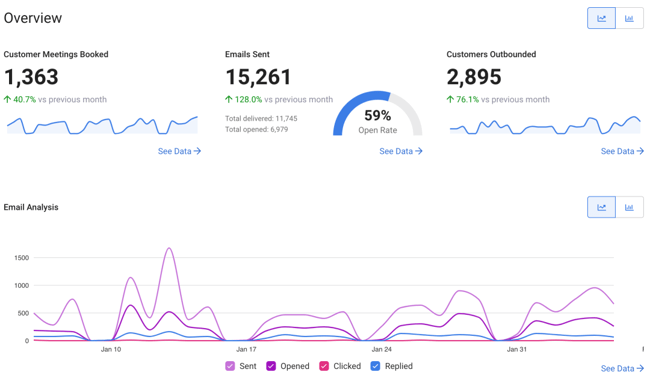
2. Which sequences are getting results. Again, Mixmax will help you figure this out. Don’t get hung up on A/B testing, though. Just run a couple of sequences in parallel and see which gets the best results.
3. Performance of individual team members, which you can also see in Mixmax.
4. How many sales qualified leads you’re generating. Tracking individual clicks etc. is all very well, but SQLs are the holy grail, so make sure you figure this out. It also helps to establish whether you’re talking about qualified opportunities or any kind of lead. So, SQL>SQO>Customer. This is tracked in Salesforce and, if you’re using Mixmax, the real-time activity sync allows you to be confident you’re looking at up-to-date data.
5. Conversion rate from SQLs to deals closed. This is your most important metric. It’s hard to tie success into the exact messaging that creates a deal, but you definitely need to measure conversions. You can have the most successful pipeline-building strategy in the world, but if you're not closing deals something’s not working.
| Related post: The Ultimate Guide to Sales Qualification: Steps and Questions |
The end of the road
Successful B2B prospecting requires a multichannel mix of outreach methods, sales prospecting techniques, and tools to target prospects where they live, speak directly to their challenges and establish trust.
The right blend and roast for you will be determined by your market, product, sales cycle, company and deal size, and goals.
You’ll also need to know what’s working by setting clear goals and tracking metrics throughout the sales cycle so you can empower your B2B sales teams to achieve even more.
Busy teams in fast-growing companies can get off to a good start by investing in a multi-purpose sales engagement solution like Mixmax to supercharge their prospecting.
Happy trails!

Frequently asked questions about B2B sales prospecting
What are B2B sales channels?
B2B sales channels include physical and online stores, sales representatives, online marketplaces, mobile apps, direct email, call centers, social media, and online and physical events.
Where can I find B2B prospects?
You can find B2B prospects in searchable databases, on social media, in webinars, industry communities, and forums, at trade and networking events, through review sites, and more. Sales intelligence and prospecting tools will also help you locate B2B prospects and get their contact information from online sources and searchable databases.
What is an example of a B2B sale?
A B2B sale takes place between two companies. For example, a logistics company needs software for their human resources department and buys this from another company that specializes in providing such software.




